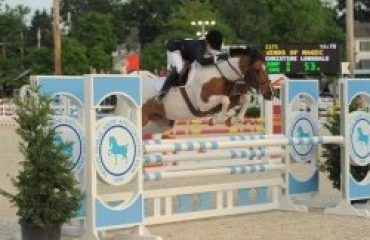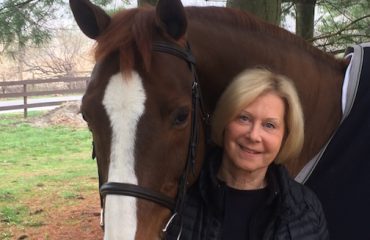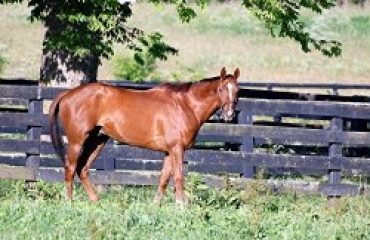
Richard Wheeler, DVM, was born in the U.K. and graduated from the Royal Veterinary College, London, in 2002. Dr. Wheeler then completed a two-year internship at Greenwood, Ellis and Partners (now Newmarket Equine Hospital) in Newmarket. In 2005, he moved to Wellington, Florida, to join Palm Beach Equine Clinic and he became a partner in 2009. Dr. Wheeler’s primary concentration is equine sports medicine. He is an FEI Veterinary Delegate for Show Jumping and Dressage and has authored several published articles on the topic of equine sports medicine. Dr. Wheeler has served on the board of the USHJA Horse and Rider Advocates Committee. In 2016, Dr. Wheeler became a founding director of the Sport Horse Research Foundation. Dr. Wheeler and his wife, Jessica, have two children. Do you have a question you want Dr. Wheeler to answer? Send questions to editor@sidelinesnews.com.
A lot of my friends have used bone scan, MRIs and other modern methods of diagnosing lameness. What are the differences between these? Why would I choose to do this over just radiographs or ultrasound?
Once we’ve localized lameness to a specific area of the limb, we use imaging modalities to diagnose what specific structures are injured and the nature of the injury. As technology advances, so do diagnostic imaging modalities. Radiography and ultrasonography have been around for several decades; more recently, nuclear scintigraphy, magnetic resonance imaging (MRI) and computed tomography (CT) have become available in equine practice. At Palm Beach Equine Clinic (PBEC) we’ve had nuclear scintigraphy and MRI for several years and both can be performed without the need for general anesthesia. We’re very excited to be installing an equine CT soon, which will be able to image the horse’s head and neck standing, without the need for general anesthesia.
Radiographs and ultrasounds remain a good way to initially work up a lameness case. These techniques are very quick and can be done at the farm to attempt to identify a problem. However, they can be limited. It can take several weeks for fractures to appear in radiographs, and ‘bone bruises’ are not visible. Ultrasound, though useful, cannot always visualize the full extent of complex soft-tissue injuries. Sometimes a lameness precedes changes in these two modalities, and we must move to more advanced imaging techniques to gain a specific diagnosis and begin treatment earlier.
A ‘bone scan’, or nuclear scintigraphy, involves an intravenous injection of a radioactive isotope, which attaches to sites of bone remodeling, allowing us to find an injury. This is the modality of choice for diagnosis of stress fractures and evaluating injuries to the axial skeleton (neck, back and pelvis). This can also be used to confirm if an abnormality on radiographs is “active” or an old injury.
MRI is a complex modality giving slice-by-slice images of great detail. MRI is very useful for evaluation of complex bone and soft tissue structures, although it’s generally limited to the distal limbs.
CT uses technology similar to digital radiography in the production and detection of radiation (x-rays). However, this gives a 3D image of exceptional detail. CT is good for evaluation of bony structures and can be of great use in the detection of subtle bone diseases such as subchondral bone injury, stress fractures and bone cysts. It’s also very useful for sinuses and to evaluate the health of the tooth roots. It’s commonly used in the assessment of complex fractures prior to surgery. I’m very excited with the potential use of CT in the evaluation of neck problems in the standing horse and believe this will be a significant step forward for equine sports medicine.
As important as the technology, equally as important is having the expertise on hand to interpret the images. As the technology has advanced, so has the field of veterinary radiology. Dr. Sarah Puchalski works with us at PBEC and is also a founding director of the Sport Horse Research Foundation.
 My horse hurt one of his tendons recently and my veterinarian mentioned the use of regenerative therapies. What are these therapies and how can they help over just rest?
My horse hurt one of his tendons recently and my veterinarian mentioned the use of regenerative therapies. What are these therapies and how can they help over just rest?
Regenerative therapies are an exciting area of equine medicine that has developed rapidly over the last few years. This encompasses therapies that use natural cells and chemicals to encourage the horse’s tissues to heal. These treatments can be used to treat some of the more challenging musculoskeletal injuries in the sport horse such as tendon and ligament injury and osteoarthritis. Many of these therapies are “autologous” meaning they use tissue from the patient and therefore are unlikely to produce an immune reaction.
One of these therapies is Platelet-Rich Plasma, or PRP. Platelets circulate in the bloodstream along with red and white blood cells. They play a vital role in blood clotting and, during normal healing, they promote tissue repair and regulate inflammation. PRP can be harvested by taking a sample of the horse’s blood and spinning it down so there’s a concentrated portion of plasma containing mainly platelets. This can then be injected into a tendon or ligament, as well as a joint that has acute inflammation. We’ve found this treatment can increase the quality of healing.
Interleukin-1 Receptor Antagonist Protein (IRAP) is a therapy that blocks a pro-inflammatory protein (called a cytokine), interleukin-1. It is produced by taking a sample of the horse’s blood into a syringe containing glass beads and incubating it over a 24-hour period at body temperature. White blood cells within the blood recognize the glass beads as foreign material and produce anti-inflammatory protein or IRAP. The blood cells are then separated from the serum concentrated with IRAP. This therapy has the benefit of producing multiple doses with one blood draw, which decreases the cost of recurrent treatments. IRAP is used to manage osteoarthritis and inflammation in joints, especially with horses that require repeated treatments.
Stem cells are undifferentiated cells capable of self-renewal and are able to produce specialized types of cells. This means if put in a tendon, stem cells should differentiate into tendon cells. Stem cells are harvested from fat or bone marrow and also provide the “building blocks” to repair damaged tissue. The process involves harvesting cells, then concentrating and propagating them in order to deliver them to the area of injury. The goal of this treatment is to provide higher numbers of cells than the body would normally provide, which results in better-quality healing. Recently, allogeneic stem cells have been reproduced, which allow cells from a donor horse to be used in other horses.
I was training a client when I noticed that her horse was making a “loud whisper sound” or roaring. It could be damaged muscles around the horse’s larynx but how can we be sure? Are there any remedies to this? How can this be prevented?
There are several potential causes for the noise you are hearing and the first step I would recommend is to have your veterinarian examine the horse, both at rest and under saddle. If your suspicions are correct, the horse is likely suffering from left recurrent laryngeal hemiplegia (roaring). This condition involves the loss of nerve fibers, resulting in muscle atrophy and subsequent paralysis of the left side of the larynx. Prevention is unlikely as we believe the condition to be heritable, although it’s been associated with perivascular injection. Diagnosis is initiated with a characteristic inspiratory noise and usually confirmed with endoscopy (a camera inserted up the horse’s nose to visualize the larynx). More recently, we’ve used “dynamic endoscopy,” meaning the video can be viewed remotely while the horse is exercising, and even jumping. This has increased our knowledge significantly, as sometimes the situation in the resting and exercising horse is very different. Once you have a specific diagnosis, treatment options will become available. The main determining factors will be the severity of the condition and concurrent exercise intolerance coupled with the horse’s discipline and level. For example, many show-jumping horses can perform well and to a high level with some degree of paralysis; however, even mild paralysis may be performance limiting in a racehorse, upper-level eventer or high goal polo pony. If necessary, the treatment of choice is surgery. Several techniques are available and I’ve seen many successful surgical outcomes.













